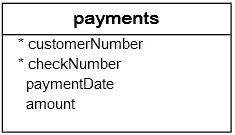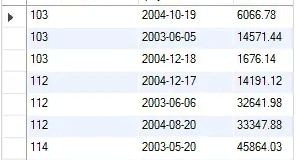REQUEST COMPLIMENTARY SQLS*PLUS LICENCE
ROW_NUMBER, this is how you emulate it in MySQL
Preamble

In this article, you will learn how to emulate the row_number() function in MySQL. We will show you how to add a sequential integer to each line or group of lines in the result set.
Note that MySQL supports the row_number() window function since version 8.0. If you are using MySQL 8.0 or later, check the ROW_NUMBER() function. Otherwise, you can continue learning how to emulate the ROW_NUMBER() function.
Introduction to the ROW_NUMBER() function
ROW_NUMBER() is a window function that returns an ordinal number for each line starting from 1 for the first line.
Before version 8.0 MySQL did not support ROW_NUMBER() like Microsoft SQL Server, Oracle, or PostgreSQL. Fortunately, MySQL provides session variables that you can use to emulate the ROW_NUMBER() function.
SET@row_number=0;
SELECT
(@row_number:=@row_number + 1) AS num,
firstName,
lastName
FROM
employees
ORDER BY firstName, lastName
LIMIT 5;
In this example:
- First, define the named variable @row_number and set its value to 0. The session variable @row_number specified with the @ prefix.
- Then select the data from the @row_number table and increase the value of the @row_number variable by one for each row. We use the LIMIT offer to limit the number of rows returned to five.
Another method is to use a session variable as a derived table and cross-connect it to the main table. See the following query:
SELECT
(@row_number:=@row_number + 1) AS num,
firstName,
lastName
FROM
employees,
(SELECT @row_number:=0) AS t
ORDER BY
firstName,
lastName
LIMIT 5;
Note that the derived table must have its own alias to make the query syntactically correct
MySQL ROW_NUMBER – add line number to each group
How about the functionality of ROW_NUMBER() OVER(PARITION BY … )? For example, what to do if you want to add a line number to each group and it is reset for each new group.
Let’s take a look at the table from the example database :

SELECT
customerNumber,
paymentDate,
amount
FROM
payments
ORDER BY
customerNumber;
Suppose that for each client you want to add a line number, and the line number is reset every time the client number is changed.
To achieve this, you must use two session variables, one for the line number and the other to store the old client number to compare it with the current one as the next request:
set @row_number := 0;
SELECT
@row_number:=CASE
WHEN@customer_no=customerNumber
THEN @row_number + 1
ELSE 1
END AS num,
@customer_no:=customerNumber customerNumber,
paymentDate,
amount
FROM
payments
ORDER BY customerNumber;
In this example, we use a CASE expression in the query. If the client number remains unchanged, we increase the @row_number variable, otherwise, we reset it to one.
This query uses a derived table and cross-connection to get the same result.
SELECT
@row_number:=CASE
WHEN@customer_no=customerNumber
THEN
@row_number + 1
ELSE
1
END AS num,
@customer_no:=customerNumber CustomerNumber,
paymentDate,
amount
FROM
payments,
(SELECT @customer_no:=0,@row_number:=0) as t
ORDER BYcustomerNumber;
In this article, you learned two ways to emulate the row_number window function in MySQL.
MySql 26 | ROW_NUMBER() Function in MySQL
Enteros
About Enteros
Enteros offers a patented database performance management SaaS platform. It proactively identifies root causes of complex business-impacting database scalability and performance issues across a growing number of RDBMS, NoSQL, and machine learning database platforms.
MORE NEWS
PreambleNoSql is not a replacement for SQL databases but is a valid alternative for many situations where standard SQL is not the best approach for...
PreambleMongoDB Conditional operators specify a condition to which the value of the document field shall correspond.Comparison Query Operators $eq...
5 Database management trends impacting database administrationIn the realm of database management systems, moreover half (52%) of your competitors feel...
The data type is defined as the type of data that any column or variable can store in MS SQL Server. What is the data type? When you create any table or...
PreambleMS SQL Server is a client-server architecture. MS SQL Server process starts with the client application sending a query.SQL Server accepts,...
First the basics: what is the master/slave?One database server (“master”) responds and can do anything. A lot of other database servers store copies of all...
PreambleAtom Hopper (based on Apache Abdera) for those who may not know is an open-source project sponsored by Rackspace. Today we will figure out how to...
PreambleMongoDB recently introduced its new aggregation structure. This structure provides a simpler solution for calculating aggregated values rather...
FlexibilityOne of the most advertised features of MongoDB is its flexibility. Flexibility, however, is a double-edged sword. More flexibility means more...
PreambleSQLShell is a cross-platform command-line tool for SQL, similar to psql for PostgreSQL or MySQL command-line tool for MySQL.Why use it?If you...
PreambleWriting an application on top of the framework on top of the driver on top of the database is a bit like a game on the phone: you say “insert...
PreambleOracle Coherence is a distributed cache that is functionally comparable with Memcached. In addition to the basic function of the API cache, it...
PreambleIBM pureXML, a proprietary XML database built on a relational mechanism (designed for puns) that offers both relational ( SQL / XML ) and...
What is PostgreSQL array? In PostgreSQL we can define a column as an array of valid data types. The data type can be built-in, custom or enumerated....
PreambleIf you are a Linux sysadmin or developer, there comes a time when you need to manage an Oracle database that can work in your environment.In this...
PreambleStarting with Microsoft SQL Server 2008, by default, the group of local administrators is no longer added to SQL Server administrators during the...

















